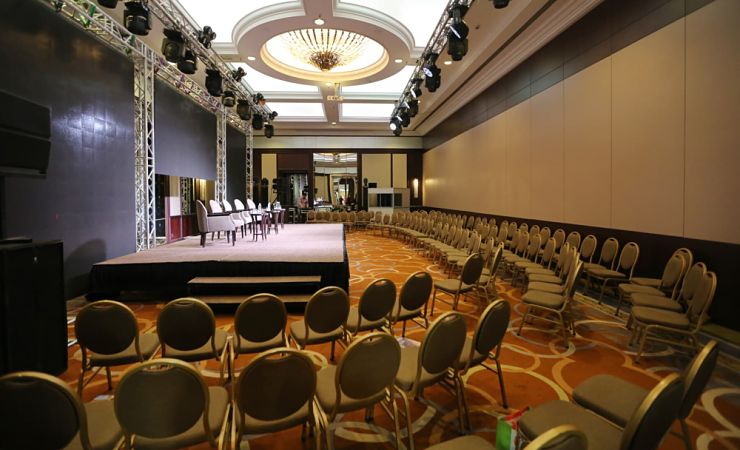Do Conferences Still Matter? Yes, Yes They Do

What are scientific conferences for? They appear to be the way scientists exchange the latest information, but the crucial value of scientific conferences is their role in maintaining scientific culture.
Even before the COVID-19 pandemic, conferences were under scrutiny. For some, they seemed to be an excuse for a jet-setting scientific elite to get together for a good time, perpetuating entrenched inequalities within science. Accessing conferences is easy and risk-free for a privileged sub-section of the scientific community only: those who are able-bodied, have no responsibility for care and with institutional or other means to support attendance. This means that women, people of color, those with disabilities, with dependents, and those who are precariously employed are likely to be disproportionately excluded. Conferences also have potentially significant environmental impacts, through international air travel or via local habitat destruction. As a result, the widespread shift to remote conferencing necessitated by COVID-19 pandemic lockdowns was welcomed by some as eliminating many barriers to entry and increasing equality of access, whilst reducing science’s damaging environmental footprint.

But in-person academic conferences bring scientists from around the world into personal contact. Sometimes this will be the only way junior scientists will be able to meet the famous names, or those who might provide a start to a career. Without these meetings the community is in danger of becoming still more relentlessly elitist – fine for you if you live in Boston or New York or the golden triangle of London, Cambridge and Oxford, because your locale already provides everything you need. More vital still, science is a developing culture, and without the trust engendered by meeting face-to-face, that culture could become dominated by weakly tied and low-trust communication networks, such as social media. Scientific culture is international, cutting across national cultures so as to aspire to create universal knowledge. It may not always succeed but face-to-face meetings make it a credible aspiration.
International scientific conferences, then, allow scientific sub-disciplines to build and maintain a shared scientific culture, and to induct new members into this culture, thus further sustaining it in the long run. This happens in formal and informal ways at conferences. Participating in formal conference sessions, presenting new or potentially controversial ideas or findings, is one way in which scientists come to see more clearly the boundaries of their discipline and what is and is not science. However, informal interactions are just as important. Serendipitous meetings in the hallways between sessions can spark conversations that stimulate new collaborations or lines of enquiry. Meeting a critic in person can smooth potentially fractious relationships, with comments moderated by body language facilitating productive disagreements.

Likewise, in-person group meetings improve the efficiency of interaction, condensing conversation that may have taken months via email into hours or less. Sharing a meal, or taking time out of the conference formalities to explore a new part of the world with colleagues helps to facilitate the development of trust, vital in establishing new professional relationships. Traveling to a conference, and expending the time, energy and financial resources to do so, demonstrates commitment to the discipline, especially important for new developments, and to colleagues, and allows an individual scientist to more fully commit to both, free from potential professional and other distractions that virtual attendance cannot fully eliminate. Celebrating noteworthy achievements at large meetings reinforces a shared disciplinary identity and values.
As sociologists, we understand that science is a cultural activity and the role that face-to-face interactions play in maintaining culture. In the early stages of the pandemic, we had a unique opportunity to trace the impacts of the loss of face-to-face international conferences on two sub-fields of physics, gravitational wave physics and photonics. We were also able to explore how scientists themselves understood the value of face-to-face conferencing. Prior to the pandemic, photonics scientists had been very supportive of reducing the volume of academic conferences, even holding their own virtual conference before this was a covid-induced requirement. In April 2020 we conducted a qualitative survey, and followed this up with another survey in November of the same year.
After six months of lockdown conditions, with the international conference circuit shut down, both gravity wave physicists and the previously critical photonics group, had a renewed appreciation for face-to-face scientific conferences. Whilst being guardedly positive about the value of remote conferencing (particularly following the rapid uptake of platforms such as Zoom or MS Teams in place of previous offerings, e.g. Skype), scientists from both groups suggested that their ability to build new trusting and productive relationships, engage meaningfully with colleague’s work and ultimately develop new lines of thinking and research had all been hampered by the enforced shift to virtual conferencing.
Our participants highlighted the profound impacts on junior colleagues and students, who had yet to develop their own professional networks and were increasingly reliant on networks developed by their supervisors or project PIs. This insight speaks to the fundamental problem with a prolonged shift away from face-to-face conferencing. Under such conditions, scientific cultures would find it increasingly difficult to enculturate new generations. This would make it impossible to sustain scientific culture as we know it today. Though this might be seen by some as a necessary corrective on science’s undue power and influence, the vital role science plays in democracy means that its cultural power must be safeguarded.
Of course, scientific communities must do more to widen access to conferences for those currently excluded. Virtual conferencing has an important role to play in scientific disciplines, in what one participant described as a ‘mixed-economy’. However, it is impossible to exaggerate the value of face-to-face conferences, to both science and society, and in the pursuit of more equitable and sustainable scientific communities. The lesson for scientists in this is to choose face-to-face meetings where there is going to be a real chance of developing your community, while avoiding the stars who turn up for their own sessions only: don’t lose what we have.





























































































